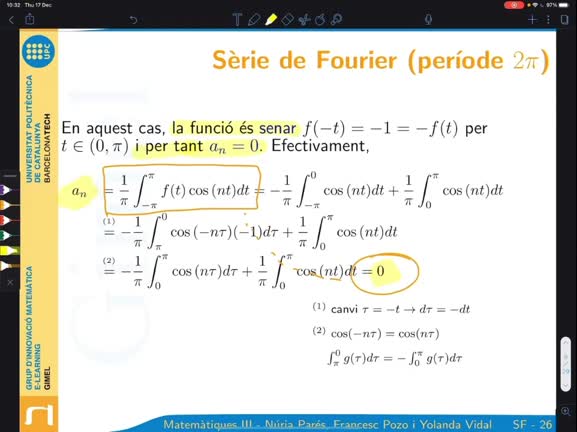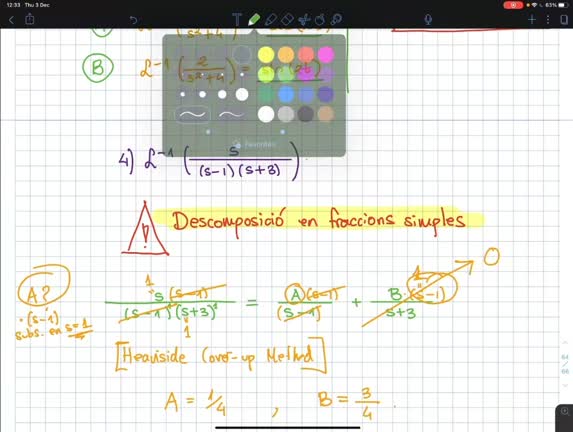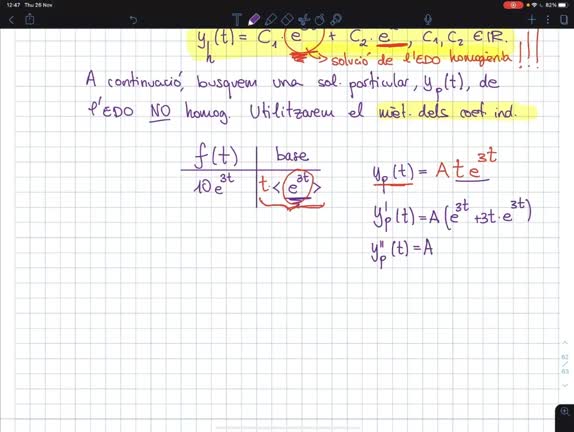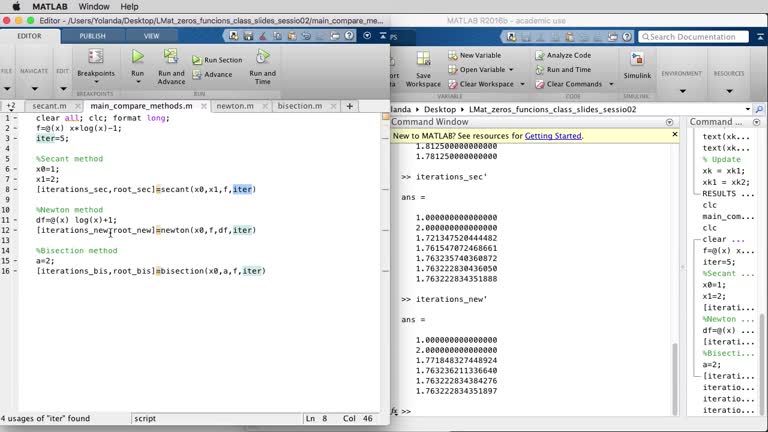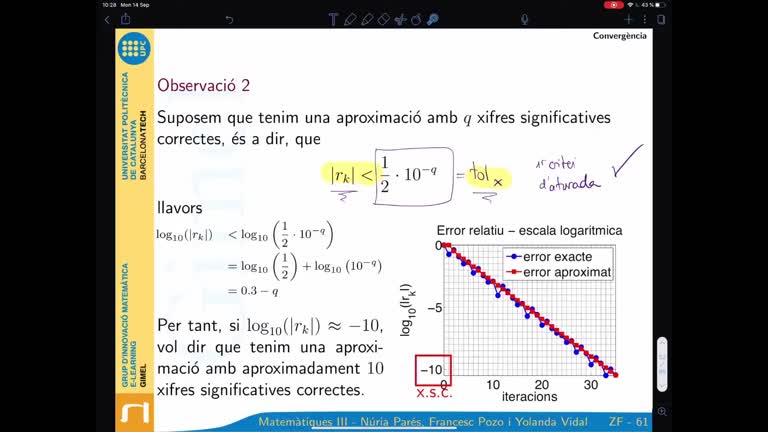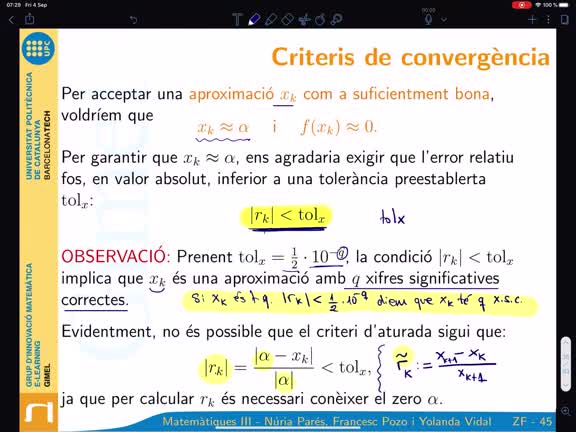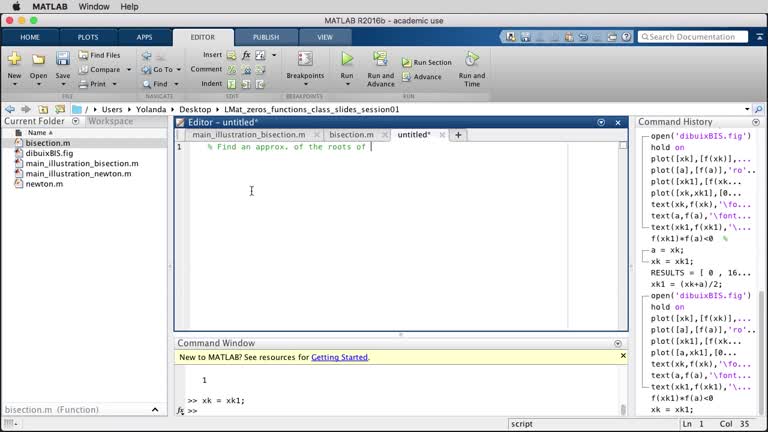Objectes multimèdia amb l’etiqueta: Equacions diferencials i integrals
Resultats de la cerca
Sèries de Fourier (forma trigonomètrica)
Accés obert
1 de maig 2024
Vídeos docents de l'assignatura Càlcul (Q2) a l'Escola d'Enginyeria Barcelona de Est
Problemes: Antitransformada de Laplace i resolució de problemes de valor inicial mitjançant la transformada de Laplace
Accés obert
1 de maig 2024
Vídeos docents de l'assignatura Càlcul (Q2) a l'Escola d'Enginyeria Barcelona de Est
Problemes: EDOs de segon ordre lineals, a coeficients constants, i no homogènia. Resolució mitjançant el mètode dels coeficients indeterminats
Accés obert
1 de maig 2024
Vídeos docents de l'assignatura Càlcul (Q2) a l'Escola d'Enginyeria Barcelona de Est
Unstable motions in Celestial Mechanics
Accés obert
10 d’abr. 2024
One of the oldest problems in dynamical systems is the stability of the Solar System. That is, consider N bodies moving following Newton's law of gravitation, one of them with large mass (the Sun) and the others with small masses (the planets). If one neglects, the gravitational interaction between planets, the classical Kepler's laws assert that the planets move on ellipses. Then, one wants to understand whether the effect of the planets mutual attraction causes long term changes on the shape and relative position of the Keplerian ellipses.
Nowadays, it is known that the answer to the stability of the Solar system is rather nuanced and that stability and instability coexist for nearby initial conditions. In this talk I will explain how to construct unstable motions in this model, which lead to drastic changes in the semimajor axes, eccentricity and inclination of these ellipses.
Nowadays, it is known that the answer to the stability of the Solar system is rather nuanced and that stability and instability coexist for nearby initial conditions. In this talk I will explain how to construct unstable motions in this model, which lead to drastic changes in the semimajor axes, eccentricity and inclination of these ellipses.
Continuum models of strongly interacting Brownian particles
Accés obert
29 de nov. 2023
Maria Bruna will discuss many-particle systems with strong interactions. These models are motivated by the study of many-particle systems in biology or industrial applications, where it is crucial to account for the finite size of particles. I will explain how these interactions can be included in the models and different methods to derive continuum PDE descriptions. In the second part of the talk, I will show how these methods can be used to model active matter systems or self-propelled particles such as bacteria or ants.
Olga A. Ladyzhenskaya: vida y matemáticas de una mujer excepcional. Lliçó inaugural Curs Ladyzhenskaya (2022-2023)
Accés obert
19 d’oct. 2022
Olga A. Ladyzhenskaya: vida y matemáticas de una mujer excepcional. Lliçó inaugural Curs Ladyzhenskaya (2022-2023)
EDPs: una equació de la calor demostra la conjectura de Poincaré
Accés obert
23 de febr. 2022
Xavier Cabré Vilagut en el Cicle de Xerrades Panoràmiques sobre temes de recerca d'actualitat adreçades a estudiants i joves investigadors.
MATLAB. Root finding 02
Accés obert
1 de gen. 2021
Vídeos docents de l'assignatura Càlcul (Q2) a l'Escola d'Enginyeria Barcelona de Est
Zeros de funcions. Gràfiques de convergència
Accés obert
1 de gen. 2021
Vídeos docents de l'assignatura Càlcul (Q2) a l'Escola d'Enginyeria Barcelona de Est
Zeros de funcions. Criteris d'aturada
Accés obert
1 de gen. 2021
Vídeos docents de l'assignatura Càlcul (Q2) a l'Escola d'Enginyeria Barcelona de Est
MATLAB. Root finding 01
Accés obert
1 de gen. 2021
Vídeos docents de l'assignatura Càlcul (Q2) a l'Escola d'Enginyeria Barcelona de Est
Zeros de funcions. Criteris d'aturada (exemple)
Accés obert
1 de gen. 2021
Vídeos docents de l'assignatura Càlcul (Q2) a l'Escola d'Enginyeria Barcelona de Est


